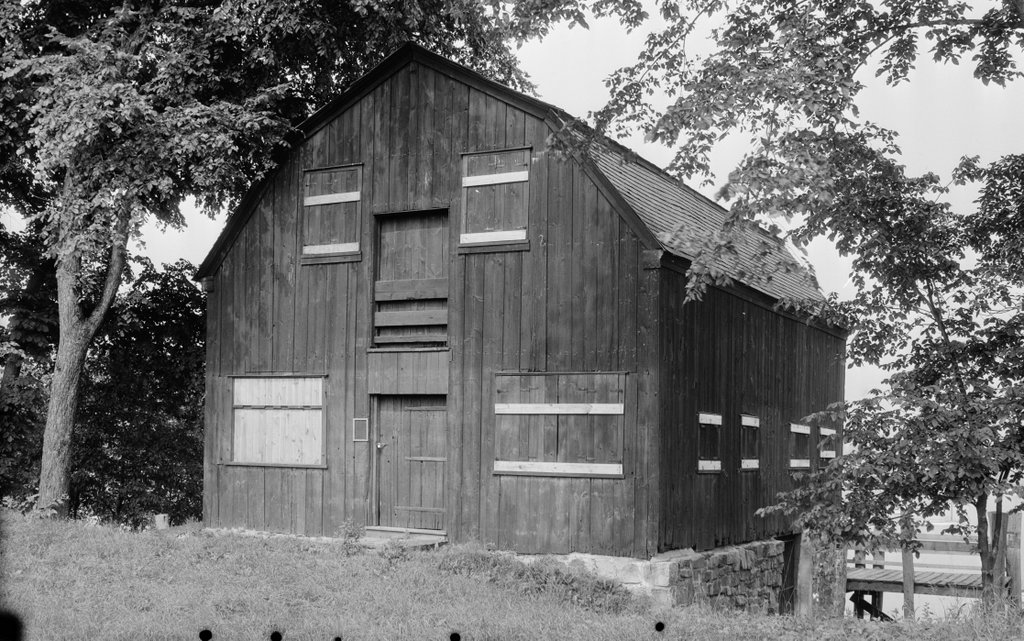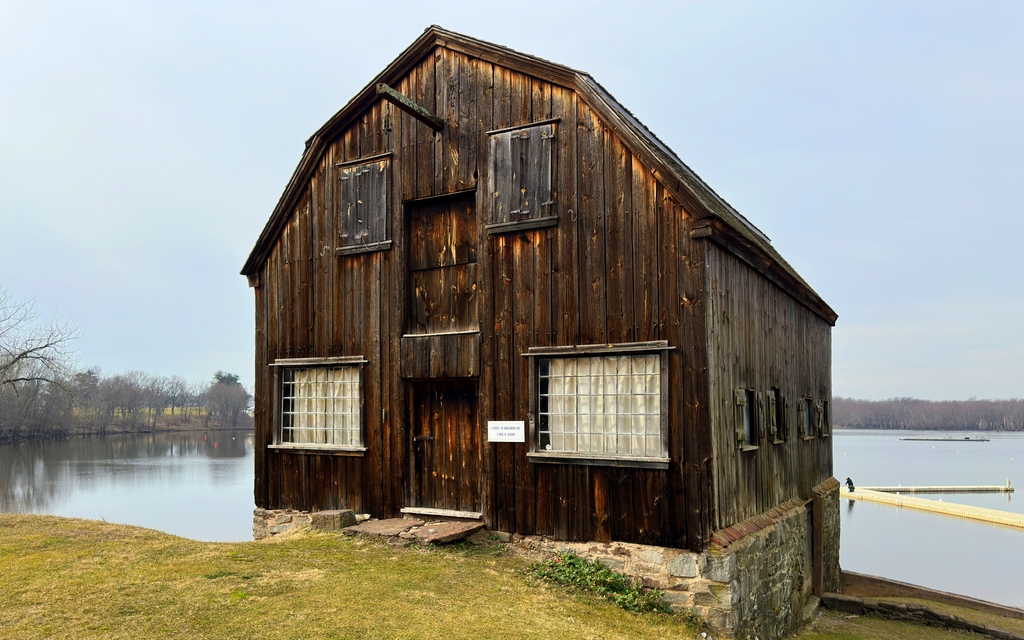The Cove Warehouse in Wethersfield on July 29, 1940. Image courtesy of the Library of Congress, Historic American Buildings Survey Collection.
The scene in 2024:
These two photos show the Cove Warehouse, which is explained in more detail in the previous post. It was built sometime in the late 17th century as one of six warehouses that stood here along what was, at the time, the banks of the Connecticut River. A flood in 1692 destroyed the other five warehouses, and it also altered the course of the river, creating the “Cove,” which is isolated from the river except for a narrow inlet.
This warehouse was the sole survivor from the 1692 flood, and throughout the 18th century it was used by the town’s merchants, who were able to sail oceangoing vessels up the river to Wethersfield. It was restored in the early 1930s, but it was heavily damaged in the March 1936 flood. However, it was subsequently restored, and the top photo shows the building in 1940, shortly after its restoration.
Today, the building’s appearance has not changed much in the past 84 years. The dock behind the building—which was likely added during the restoration—has since been removed. This probably occurred in 1971, when a stone wall was built at the base of the foundation in the back of the warehouse to protect it from erosion. Otherwise, though, the building is still easily recognizable from the top photo. It stands as an important town landmark, and it is operated as a seasonal museum by the Wethersfield Historical Society.


